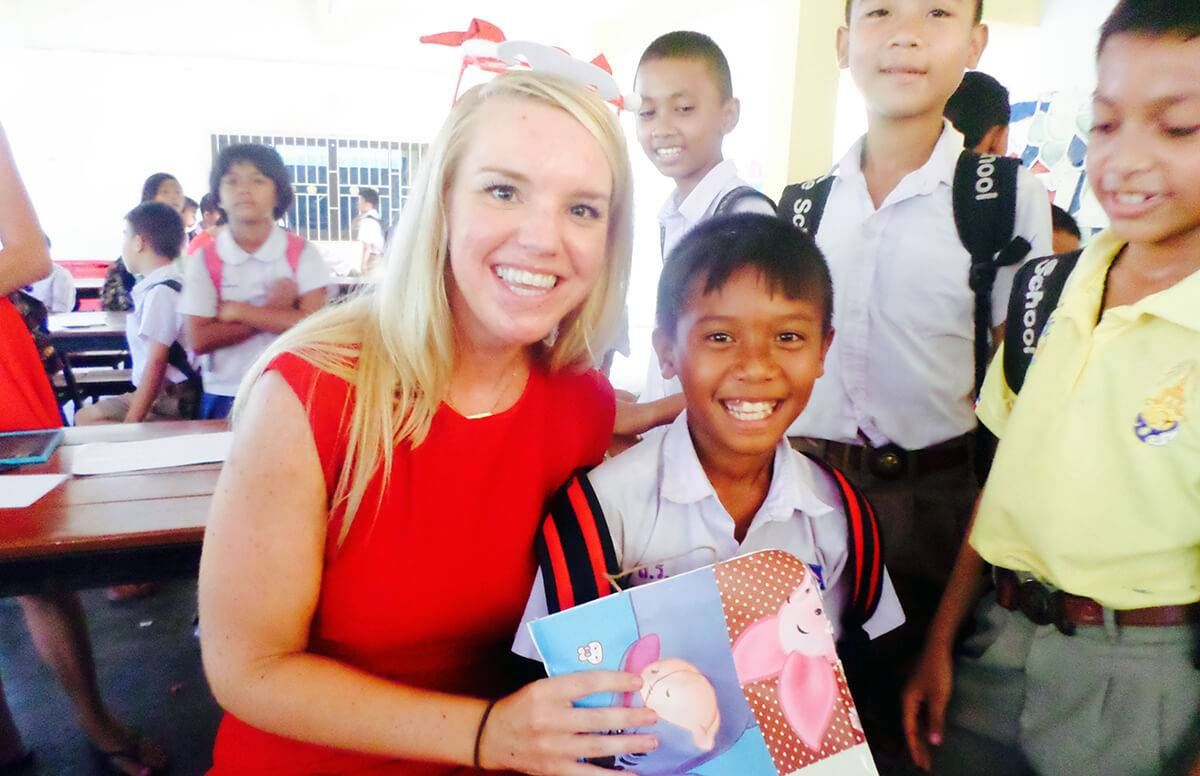Why Budgeting a Little for Charity Really Pays
A nonprofit founder explains how small donations can make a big difference
Never underestimate the impact that a charitable donation can make.

Let me tell you about one couple who donated to my organization (Make Our Day, a nonprofit that supports education and activities for children from low-income housing in Phuket, Thailand) and tried to shortchange their own contribution.
When I originally approached the pair about a $30 monthly donation, they weren’t sure about making that kind of steady commitment. They still sent $30 along, saying they knew it wasn’t much, but that they’d keep the month-to-month donation in mind.
I responded by showing show how far “not much” went.
In the Monday after-school tutoring class I teach, seven students share one one book — mine. Thanks to the couple’s $30 gift, I was able to buy five more.
The purchase excited a student of mine named Peyton, but he quickly pointed out a problem: We now had five books, but we had seven students.
Of course he was right. But I then asked him, “Peyton, how many books did we have last week?” He replied with “soon” — the Thai word for zero. I told him that was right and that maybe next week there would be seven. He laughed and scurried away so he wouldn’t have to share his book.
That couple’s seemingly small offering made a huge impact.
Looking for reasons to squeeze charitable donations into your budgets? Here are three that might make you want to do so, especially for an international education charity:

1. If you give a little, it will mean a lot. As clichéd as supporting a cause “For just $1 a day…” sounds, it’s rooted in truth: A dollar a day can often make a huge difference to a charity’s beneficiaries.
When you’re making a contribution that will buy a child a book, it’s not about adding to a school’s library, it’s about empowering students to take charge of their own futures.
One book — one small donation, —can absolutely change a boy’s or girl’s life. Cultivating a curious and creative next generation is in the interest of all of us, and — as Encore.org’s new Generation to Generation initiative demonstrates — older generations can play a part through giving to global education.
2. Making a charitable contribution for education lets you learn something new later in life. In a way, giving this way as an adult lets you go back to school. Seeing children grow and learn gives you an opportunity to not only become invested in a program, but also to maybe live a little bit vicariously. It’s fun to watch kids develop interests that may be similar to ones you held at their age or watch them enjoy a book you read to your children.
3. You can see the change you started. Donating to international education programs provides a unique opportunity to be an active part of a generational shift you may have thought you wouldn’t see in your lifetime.
I’ve had the privilege of meeting and speaking with people from my grandparents’ generation who are familiar with where I teach. During a very different time in history, they were there, too.
Making charitable donations, even small ones, can make a real difference. Though you may never know or meet the recipients of your gifts, the sums you give can help them leave a lasting impact on their communities, maybe even the world.
Recognize the impact you can have and start contributing toward that difference.

